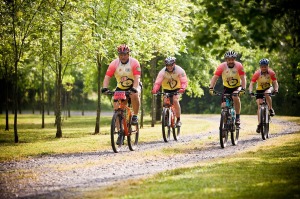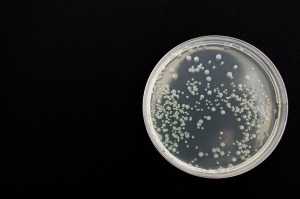Last time I covered what can be considered the “good” reasons for wanting to lose weight.
That part is not controversial at all, and based on pretty solid scientific evidence.
This post, on the other hand, will cover the “bad” and the “ugly” reasons for wanting to lose weight.
As such, you have to understand that these are my opinions, and that they may not be pleasant to read for everyone. Yet it might be a good idea to read on, and comment on the post. A healthy dialogue might ensue. (Stranger things have happened.)
The Bad
The single bad reason I can think of for wanting to lose weight is also the most common one: To look a certain way.
We are bombarded by images of men and women that look very slim, or very buff, or very both. Never mind that they are largely doctored images, fabricated by an untrustworthy industry; we’ve come to associate such looks with fitness, and desire.
And, sadly, as others have pointed out, even looking strong is actually looking very slim. There is no room in those images for being strong and fit but not looking like a model. And that’s really bad.
You cannot stand for fitness and health and insist on looking like a model. While it is natural for a very small portion of humanity to look that way, for the vast majority it is simply not healthy.
Even fitness models, perhaps one of the weirdest inventions of our modern age, are not to be trusted. They are a contradiction in terms, with their fake nails, fake tans, fake… you name it.
Fitness is a naturally occurring state of being when one is very active and eats well (see my post on the definition of fitness if you need a refresher). And, in a slight leap of meaning, we could think of what is natural for a body, in terms of shape and looks, as being fitness. Allowing your body to be shaped the way its own genetic code programs it for is more akin to fitness than forcing it into a specific shape through dieting or excessive exercise. And silicone implants.
“But wait,” you want to tell me, “what if looking a certain way (i.e. like a model, or a fitness model) is going to make me feel good? Isn’t feeling good something you filed under ‘The Good’ in your previous post?”
Feeling good based on how we look exclusively, instead of how our bodies actually feel (and what they are capable of) is exactly the same as thinking we are going to be happy once we get rich. For those who go down that road, the destination is never reached: the richer they get, the more they compare themselves to yet richer folks, and the less satisfied they are with the wealth they have.
Basing your self-esteem, your “feeling good,” on looks alone is one sure way to never have much self-esteem, or feeling good for more than a fleeting moment, because you’ll always find yourself wanting in some way. And that’s definitely bad.
The Ugly
What could be worse than wanting to look a certain way when it comes to reasons for wanting to lose weight?
Well, perhaps not “worse,” but definitely an ugly trend, and a pet peeve of mine: Losing weight in order to better perform during races.
Some otherwise fairly fit folks get convinced by coaches, or perhaps by reading too much so-called training advice out of context, to lose weight in order to reach an “ideal” racing weight. To “make their numbers,” like power-to-weight ratio, better.
Yes, if you were not familiar with this, it is true. And very sad.
Granted, when you watch the pros racing in Kona, or running the Boston marathon, they sure don’t seem to carry any extra weight. And their numbers look great on paper.
But they did not get that way because they followed a regimen destined to make them lose weight at the last minute so that their numbers would look great. They got there through years of intense training, and gradual adaptation.
While it is true that shedding a bit of weight will make VO2max (the weight-normalized version, not the absolute number) and power metrics look a little better, which on paper would appear to indicate a better potential racing performance, that is a very, very ugly reason for losing weight. And it is no guarantee that the performance will ensue (except perhaps through a bit of placebo-like effect).
Because the new, lower weight, is not natural for your body, even if you are fit. Going on a crash weight loss regimen in the last few days, or even a few weeks, before a race is a bad idea. Your body might very well interpret it as a famin situation, and curb your performance in order to make energy reserves last longer.
Instead, we are all much better off improving the fundamentals of our bodies; work on the “top line” part of the performance equation (power, speed, economy) and let your body find a natural fitness equilibrium over time. At a weight it is comfortable with.

It is not just running and triathlon where this applies. Any sport where the body has to be moved is subject to abuse of power metrics.
The bottom line
You still with me? Nice. There’s hope.
Talking of hope, I hope you understand this pair of posts is only partially based on science; namely, Part 1, about why too much fat in the wrong place is dangerous for your long-term health. That’s well established.
The rest is in part psychology, part training advice of dubious quality, and some of it is still the subject of much conjecture.
The bottom line is that you should trust how your body feels as you use it. Move, move some more, and appreciate what your body can do. You should start with that, not just with an aim to lose a certain amount of weight.
Don’t pay attention to how people look; looks can be very deceiving. And unhealthy.
And by all means, steer clear of any coach who starts by saying you should lose weight. Or uses that reasoning to suggest better performance can be attained…
Pictures from Pixabay









